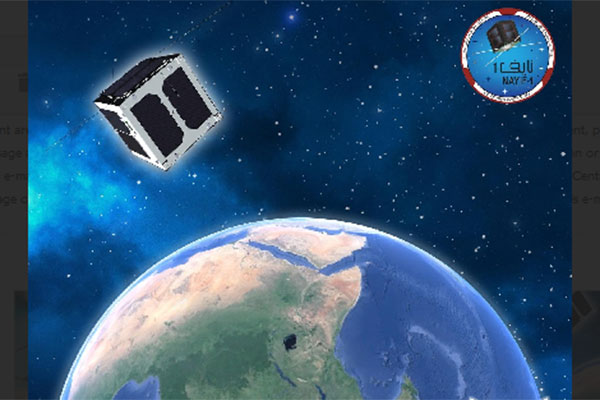
UAE readies communication satellite for launch
DUBAI, June 27, 2016
The Mohammed bin Rashid Space Centre (MBRSC) and the American University of Sharjah (AUS) have announced the completion of the design and building of the communication Nanosatellite, Nayif-1.
The satellite has also successfully passed all stages and tests, and is now ready for launch into space aboard SpaceX’s Falcon 9 Rocket. The UAE's first Nanosatellite was developed by Emirati engineering students from AUS under the supervision of a team of engineers and specialists from MBRSC within the framework of a partnership between the two entities, aiming to provide hands-on experience to engineering students on satellite manufacturing.
Yousuf Hamad Al Shaibani, director general of MBRSC, said: “This achievement reflects the determination and commitment of MBRSC to develop Emirati talent specialised in satellite manufacturing and space science. Sustainable development deliverables and the post-oil phase require building specialised human capabilities, where entities and institutions have to launch programs specialised in the science and technology sectors to achieve educational goals in line with the UAE’s plans and strategies.”
“The Emirati university students possess the required skills and capabilities to design and build a CubeSat as a result of a knowledge transfer strategy and cooperation between academic and professional institutions that are launching real space projects, enabling students to see the product of their work as a reality in space,” he added.
“This is a great achievement and a source of pride for all of us,” said Dr Björn Kjerfve, chancellor of AUS. “Satellite technologies are destined to become an important part of the future of the country and we are pleased to see our students and faculty play their due role in making it happen. Together with partners such as MBRSC, I am sure our future endeavours in this field will go from strength to strength.”
Ibrahim Al Qasim, project manager of Nayif-1 at MBRSC, said: “Nayif-1 went through several stages. As is typical in most satellite projects, we started out with the initial design phases and we then moved into further verification of these designs by assembling and testing some of the components, once our designs were finalized and verified we moved into the Assembly, integration and testing of the satellite flight model and readiness for launch.”
“The flight model of Nayif-1 successfully completed all testing necessary to ensure that the main components of the satellite were working properly. This included tests on all subsystems such as the power subsystem, control subsystem, the satellite antenna and communication subsystem. These stages were followed by the control system calibration and environmental tests, including thermal and vibration tests, in addition to the final tests for the satellite systems, and measuring its final weight and size,” he added.
“The installation of the ground station was completed at AUS, which will operate and control the satellite throughout its journey in space. Nayif-1 is ready for launch now and it’s scheduled to be launched in the fourth quarter of the year. However, the launch date depends on the launching provider, bearing in mind that Nayif-1 is considered a non-primary payload, being a nanosatellite,” Al Qasim explained.
“Nayif-1 is characterised with a number of advanced features, most notably that it’s programmed to transfer messages in Arabic. It also contains an active control system – usually satellites with a unit size of 10x10x10 cm which are known as 1U Nanosatellites use a passive control system due to their limited size. The control system works accurately to determine the satellite’s position and direction in space in order to maintain its balance attitude during operations,” Al Qasim concluded. – TradeArabia News Service







